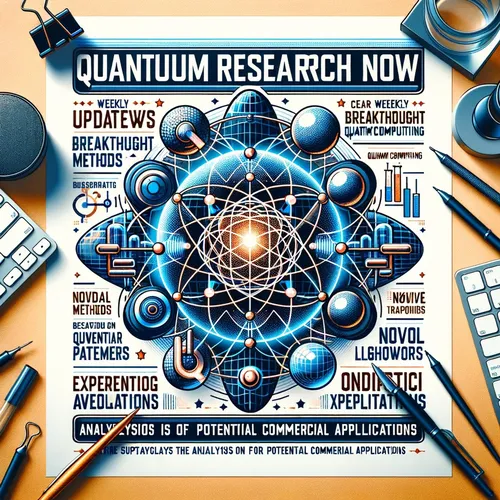IBM and AMD's Quantum Leap: Supercomputers Redefined
- Author
- Quiet. Please
- Published
- Mon 01 Sep 2025
- Episode Link
- https://www.spreaker.com/episode/ibm-and-amd-s-quantum-leap-supercomputers-redefined--67583896
This is your Quantum Research Now podcast.
This is Leo, your Learning Enhanced Operator, here with Quantum Research Now. I won’t waste a single nanosecond—today’s quantum news is nothing short of seismic. IBM and AMD just announced a partnership set to redefine computing by building the world’s first **quantum-centric supercomputers**. That headline dropped hours ago, and if you’ve ever wondered when quantum theory would leap from whiteboards to world-changing infrastructure—this is the moment.
Let me paint the picture. Imagine stepping into a data center, the air thrumming with energy. On one side, the familiar low roar of high-performance computing—vast arrays of AMD’s CPUs and GPUs, blazing through calculations at speeds that rival the imagination. But in the corner: a cooled, humming, almost monastic quiet—a quantum system from IBM. Today, these two legendary giants declared they’ll blend the relentless force of classical computing with the eerie elegance of quantum mechanics, creating supercomputers that don’t just run faster—they think differently.
Why does this matter? Classical computers are like expert marathon runners—pure stamina, the best at steady, sequential tasks. Quantum computers, on the other hand, are more like master illusionists; they harness **superposition** and **entanglement** to juggle countless possibilities simultaneously. Until now, these talents were separate, but imagine if you could team up the world’s fastest runner and the cleverest illusionist to navigate a complex maze. Some problems—like modeling new pharmaceuticals or optimizing logistics on a global scale—are mazes so intricate, only such a duo could hope to conquer them.
Lisa Su, AMD’s CEO, summed it up perfectly: “High Performance Computing is the foundation on which IT can rely to solve major global challenges.” IBM’s Arvind Krishna doubled down, saying this hybrid model will push past the limits of traditional computing.
Here’s where it gets dramatic. IBM’s “Sterling” quantum system, announced earlier this year and now fast-tracked by this partnership, aims to be the **world’s first fault-tolerant quantum computer**, running on 200 logical qubits. Scientific barriers, according to IBM, have fallen. Only engineering challenges remain. Think about that: the theoretical “impossible” is now just a question of “when.”
You might ask—what does this look like under the hood? One breakthrough is **Qiskit**, an open-source software kit that will let developers integrate quantum routines directly into classical HPC workflows. Field Programmable Gate Arrays—FPGAs—bridge real-time corrections between classical and quantum sides. The upshot? Imagine spelling-checking your document as you go, but for quantum errors—where stakes are much, much higher.
As we connect these worlds, the implications stretch beyond science. With quantum-classical hybrid systems, the same way cloud computing turned every device into a powerhouse, quantum-centric supercomputers could transform every sector they touch. From climate modeling to new AI architectures, the quantum future is, suddenly, not distant—it’s under construction.
Thanks for tuning in to Quantum Research Now. If you have questions, or there’s a topic you want on the air, email me anytime at [email protected]. Don’t forget to subscribe, and remember, this has been a Quiet Please Production. For more, visit quietplease.ai.
For more http://www.quietplease.ai
Get the best deals https://amzn.to/3ODvOta
